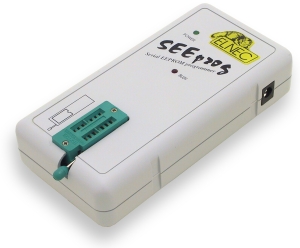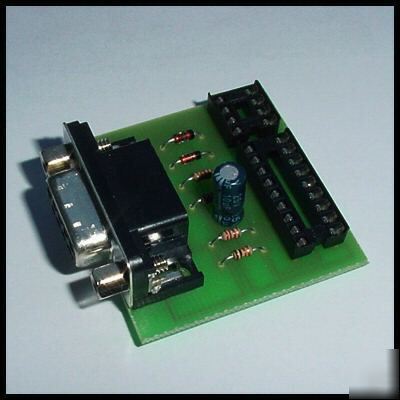

I have 23A/B which is for complex programmable logic devices and would probably be used in conjunction with a PLCC to DIP adapter. There are around 30 different SIM modules that let you program different families of devices. Next to the 48 pin ZIF socket is a SIM socket which is for personality modules. Instead I found an EMP-20 which is the parallel version of my Needham’s Electronics PB-10 ISA programmer on eBay for $40 dollar US. Apparently there are a lot of people building retro gaming computers, which does sound like a fun project. I also looked on Craigslist and eBay and was surprised at the high prices. I asked around if anyone had an old 286 or 386 in their garage, but struck out.
#Serial port eprom programmer Pc#
However, it requires an old school 8 bit ISA slot which was phased out of consumer PC motherboards around the turn of the century. I have an old Needham’s Electronics PB-10 programmer which would work.

I looked at other modern programmers that fit my requirements but they were very expensive. However, these older EPROM chips are not currently supported by the TL866 and probably won’t ever because they require 25 volts for programming. I have a TL866II which is a good inexpensive USB programmer that can do both parallel and serial. These are the ones with the quartz window on top. For the console and its game cartridges I will be using vintage parallel EPROM chips.
#Serial port eprom programmer how to#
In my previous tutorial Recover Bricked BIOS using FlashRom on a Raspberry Pi, I demonstrated how to program E-EPROM chips using a Raspberry Pi, but that method used a serial protocol which only requires 4 data lines (MOSI, MISO, Chip Select and Clock). It is possible to adapt newer 28 pin chips but there are space considerations and keeping the pinout the same is much easier. I’m not aware of any modern pin compatible substitutes but surplus EPROMS are available. To work on the Bally I need to be able to replace 8 bit 24 pin 8K ROM chips.

I’m currently restoring a 1978 Bally video game console. Being able to read and write chips from the Many of the components are 4 decades old and long out of production. One of my hobbies is old arcade machines and vintage video


 0 kommentar(er)
0 kommentar(er)
